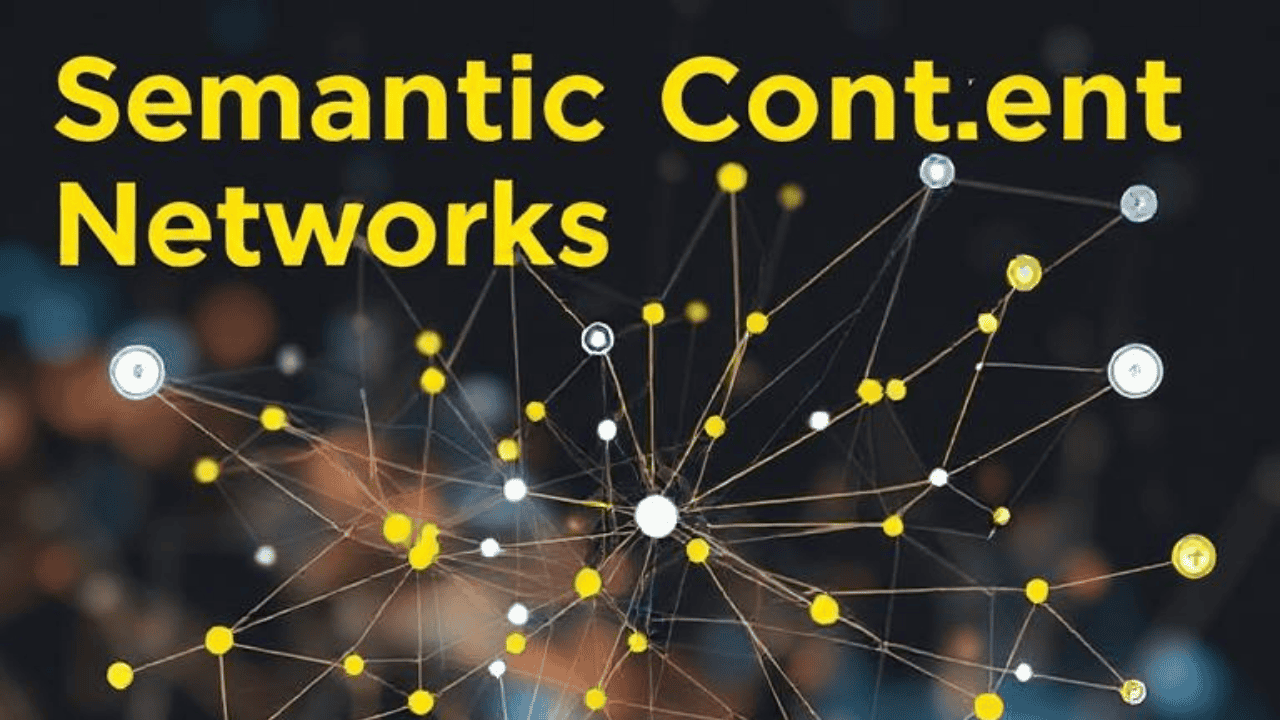If you have been paying attention to the evolution of search engine optimization over the past few years, you have likely noticed a significant shift. The old ways of stuffing keywords and building isolated pages are becoming less effective. Instead, a more intelligent, interconnected approach is taking center stage. One of the most compelling frameworks leading this change is the concept of semantic content networks by Ben Stace. This methodology moves beyond traditional SEO to create a web of content that both search engines and humans find genuinely valuable. For anyone involved in content creation or digital marketing, understanding semantic content networks by Ben Stace is no longer optional—it is essential.
What Are Semantic Content Networks by Ben Stace?
At its core, the idea of semantic content networks by Ben Stace is about structuring your website’s content around topics and their relationships, rather than individual keywords. Instead of creating standalone articles or pages targeting specific search terms, you build an ecosystem of content that comprehensively covers a subject. Each piece of content supports and connects to others, forming a network that search engines can easily understand and trust.
This approach aligns perfectly with how modern search engines like Google have evolved. They no longer simply match keywords; they strive to understand the intent and meaning behind queries. By implementing semantic content networks by Ben Stace, you are essentially building a map of knowledge that mirrors the way people—and algorithms—think about information.
The Core Principles Behind the Methodology
The framework of semantic content networks by Ben Stace is built on several foundational principles. These ideas work together to create a robust content architecture that performs well in search results and engages readers.
One of the key principles is topic clustering. This involves identifying a central, broad topic—often called a pillar topic—and then creating a series of related content pieces that explore subtopics in detail. These subtopics are interlinked with the pillar content and with each other, creating a network of relevance. This structure makes it clear to search engines that your site is a comprehensive resource on the subject.
Another important aspect is entity optimization. In the context of semantic content networks by Ben Stace, entities are not just keywords; they are concepts, people, places, or things that are all connected. By focusing on entities and their relationships, you provide search engines with rich contextual signals. This helps your content rank for a wider range of queries, including those you may not have explicitly targeted.
Intent alignment is also critical. Each piece of content in your network should be designed to match what users are actually looking for when they search. Whether they are seeking information, looking to make a purchase, or trying to navigate to a specific site, your content should meet those needs directly. Semantic content networks by Ben Stace emphasize understanding and fulfilling user intent at every level.
How to Build Your Own Semantic Content Network
Implementing semantic content networks by Ben Stace might seem daunting at first, but it becomes manageable when broken down into clear steps. The process begins with thorough research and planning.
Start by identifying your core pillar topics. These should be broad subjects that are central to your business or area of expertise. For example, if you run a fitness website, your pillar topics might include nutrition, workout routines, and mental wellness. Once you have your pillars, dive deeper into the subtopics. Use tools like keyword planners, competitor analysis, and question-answering platforms to find all the related questions and themes your audience cares about.
Next, create your content map. This is a visual or written outline of how all your content will connect. Your pillar page should link to various cluster pages, and those cluster pages should link back to the pillar and to each other where relevant. This internal linking strategy is a crucial part of semantic content networks by Ben Stace, as it helps distribute authority and context throughout your site.
When creating the content itself, focus on quality and depth. Each piece should provide genuine value and cover its topic thoroughly. Use natural language and avoid keyword stuffing. Remember, the goal is to be helpful and comprehensive, not to game the system. This is what makes semantic content networks by Ben Stace so effective—they prioritize the user experience, which in turn satisfies search engines.
The Benefits of Adopting This Approach
Why should you invest time and resources into building semantic content networks by Ben Stace? The benefits are numerous and impactful.
First, this approach significantly improves your SEO performance. By covering topics comprehensively and structuring your content logically, you increase your chances of ranking for a wide array of keywords. This is especially true for long-tail queries, which often have lower competition and higher conversion rates. Sites using semantic content networks by Ben Stace often see noticeable increases in organic traffic over time.
Second, semantic content networks enhance user engagement. When visitors find a site that answers all their questions in one place, they stay longer, explore more pages, and are more likely to return. This reduces bounce rates and increases the likelihood of conversions. The interconnected nature of the content guides users naturally through your site, providing a smooth and enjoyable experience.
Third, this method future-proofs your content strategy. Search engines are constantly getting better at understanding context and meaning. By adopting semantic content networks by Ben Stace now, you are aligning your site with the future of search. This makes your content more resilient to algorithm updates and changes in SEO best practices.
Real-World Applications and Success Stories
Many businesses and content creators have successfully implemented semantic content networks by Ben Stace with impressive results. One case study involved a local service business that restructured its blog content around semantic principles. Within three months, the site saw a 123 percent increase in organic traffic. The business also ranked for more long-tail queries, which led to higher conversion rates.
Another example comes from the e-commerce sector. An online retailer used the framework of semantic content networks by Ben Stace to organize product descriptions, blog posts, and buying guides into a cohesive network. This not only improved search rankings but also made the site easier to navigate. Customers could easily find related products and information, which boosted average order values and customer satisfaction.
These stories highlight the versatility of semantic content networks by Ben Stace. Whether you are running a small blog or a large e-commerce site, this approach can be tailored to fit your needs and goals.
Overcoming Common Challenges
While the benefits are clear, implementing semantic content networks by Ben Stace is not without its challenges. One of the most common hurdles is the initial investment of time and resources. Researching topics, planning the network, and creating high-quality content all require effort. However, this investment pays off in the long run through sustained traffic and better user engagement.
Another challenge is maintaining consistency. A semantic content network is not a one-time project; it requires ongoing attention. As your industry evolves and new questions emerge, you need to update and expand your content. This means regularly auditing your network, identifying gaps, and creating new pieces to fill them.
Despite these challenges, the payoff makes it worthwhile. Sites that commit to semantic content networks by Ben Stace often establish themselves as authorities in their fields, earning trust from both users and search engines.
The Future of Content and SEO with Semantic Networks
As search engines continue to advance, the importance of semantic understanding will only grow. Concepts like voice search, artificial intelligence, and personalized results all rely on context and relationships. This makes semantic content networks by Ben Stace more relevant than ever.
In the future, we can expect search engines to become even better at interpreting user intent and delivering precise answers. Websites that have already built semantic networks will be well-positioned to benefit from these changes. They will appear in more featured snippets, voice search results, and other emerging search features.
For content creators, this means that now is the time to start thinking semantically. By adopting the principles of semantic content networks by Ben Stace, you are not just optimizing for today’s search algorithms—you are preparing for tomorrow’s.
Conclusion
The concept of semantic content networks by Ben Stace represents a significant shift in how we think about content and SEO. It moves us away from isolated tactics and toward a holistic, user-centered approach. By focusing on topics, relationships, and intent, we create content that truly serves our audience while also performing well in search results.
Implementing this strategy requires effort and planning, but the rewards are substantial. From increased traffic and engagement to future-proofing your site, the benefits are clear. As search continues to evolve, those who embrace semantic content networks by Ben Stace will be ahead of the curve, ready to meet the demands of both users and algorithms.




